Poco review
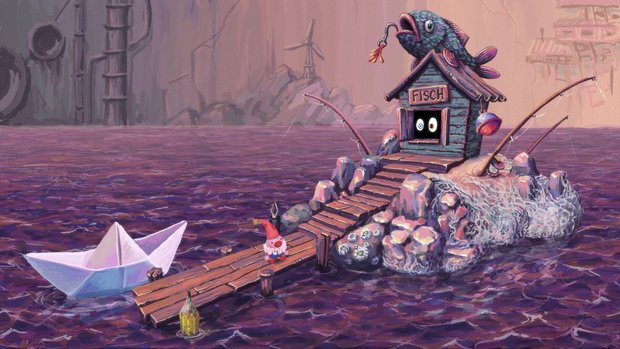
- 0 Comments
A gorgeous free small-scale adventure about a tiny clown with a lot of heart
The desire to belong is a universal feeling across cultures. We subconsciously form “in” groups with like-minded individuals, and anyone who doesn’t fit in neatly we consider the “other.” Whalefall’s Poco is a wonderfully surreal short and sweet exploration of this idea through a darkly beautiful world of misfits. There’s nothing particularly groundbreaking in its gameplay design, but the music, world, and characters are all so incredibly charming that it’s borderline impossible to reach the ending without a smile on your face. And best of all, it’s entirely free.
You begin playing as the titular two-inch tall clown putting on a performance for three floating disembodied clown faces in a foreboding dark room. Poco tries to put on their best performance for these onlookers, but no matter what happens the clowns are unimpressed. Then they unceremoniously banish Poco through a trapdoor in what is revealed to be a massive circus tent being carried high in the sky by a hulking beast towering above a vast forgotten world below. Poco awakens in this underworld of rejected oddities and is determined to find a way back up to the circus for a second chance to prove themselves.
From the moment you boot up the game, the presentation in Poco is stunning. Backgrounds are presented in a 2D hand-painted children’s book style with tons of little details, while characters you meet are all 3D models that look almost clay-like in appearance. The Below World is filled with whimsically fantastical backgrounds and wonderfully quirky characters, as well as abandoned refuse thrown away from the realm above: one area is filled with broken-down washing machines, while another has you exploring a house lined with a vast array of buttons of every shape and size dropped from various articles of clothing. Some discoveries are less mundane than others; one particularly macabre scene suggests Poco isn’t the first clown to have been sent tumbling down here from the circus above.
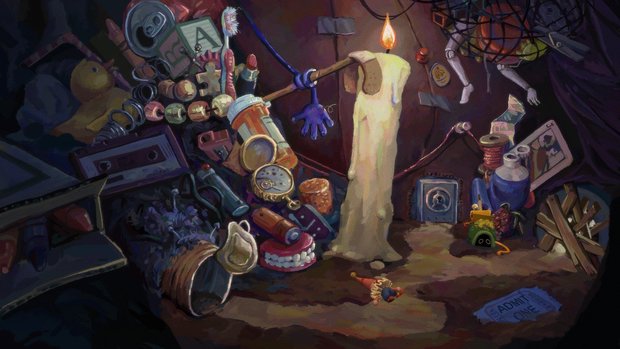
The animation in Poco is equally impressive: The little protagonist has a whimsical bounciness, and every character you encounter has a distinctive manner of movement, like the shell-wearing hoarder of various knickknacks named Gripp, who moves their arms around while shifting their eyes nervously in conversation. Even if there were no dialogue in the game at all, loads of personality is conveyed in every detail. The incredible animation isn’t limited to the 3D characters inhabiting the world either: various 2D elements in the backgrounds have subtle movements as well, like a small river quietly flowing past or the uneasy breathing of a potentially vicious three-headed mole creature silently watching as Poco approaches.
You’ll meet a variety of quirky characters calling themselves homunculi, each sporting a particularly notable feature above all others – e.g. one has a massive pair of ears, while another has a nose that takes up most of their face. The homunculi all have tasks they need your help with, and once completed they will provide you with a rocket piece to aid in getting you back to the circus. While the majority of your interactions will be with these unusual creatures, there are a few non-homunculus characters in The Below World as well. One of my favorite interactions was with a sentient earthworm who says he feels a bit stiff, and Poco decides to use one of their signature clown abilities to try to help the worm out. Afterward, you can leave the room and come back multiple times and the resulting scene just gets funnier and funnier. I won’t spoil anything here, but I was left rolling with laughter seeing just how long the developers kept the gag going.
Character interactions are portrayed through dialogue screens of text accompanied by charming gibberish sounds unique to each character. Unlike the others whose dialogue is portrayed in English, Poco speaks exclusively in wingdings while making cute little honks. Everyone else apparently understands what Poco is saying, which leads to a fun dynamic where the player is left in the dark while characters go about carrying on conversations normally. The game’s music is superb, with the majority of tracks in a relaxing lo-fi style that befits the game’s dreamlike tone. There are some notes of sadness built into a few tracks as well, with quiet, echoing piano rather than the majority of the game’s funky beats.
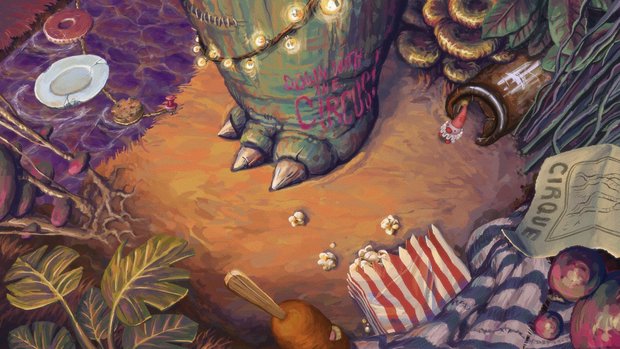
Seasoned adventurers will feel right at home when taking their first clicks in Poco’s world, with a two-click system that largely works the same as many other titles. Your cursor is shown as a little glove hand that will change animations based on what you are mousing over (walking, talking, picking up something, etc.). Left clicks perform most tasks in-world: from moving Poco around, talking with other characters, and interacting with/picking up objects in the environment. Right clicking will take you to the game’s menu with an inventory along with a full map of the game world you have explored so far.
There is no combining of items you’ve collected, and rather than click items to use from your inventory directly, you must first click on an interactive object in the environment (e.g. a stove), then choose the item from your inventory (e.g. a match). It’s a bit of a clunky system, but it gets the job done and works well enough once you get used to it.
The Below World is fully accessible from the moment you arrive, aside from having to complete any objectives that would bar you from reaching other areas. Having a full map of the world along with locations of key characters listed in your inventory at all times works wonders in keeping track of where you’re located, and the map has a hand-drawn sketch aesthetic that makes it feel like something Poco actually scribbled down.
A few times I had to backtrack to an item on the other side of the map before I could complete a puzzle, but the game world is small enough that it never felt like a chore to retread locations I had been to multiple times previously. While there are relatively few areas available, there’s a sense of vastness in the spaces you explore that makes the world feel expansive beyond the select places Poco goes. For example, at one point you visit a strange fishing hut in the middle of what appears to be a huge metallic cavern filled with water, or a canyon cutting across a ravine that seems to go down forever.
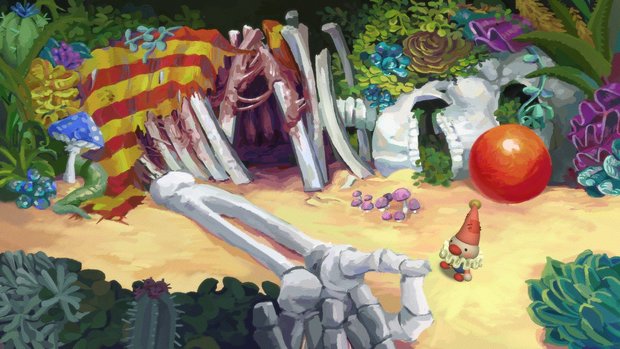
Puzzles are largely intuitive based on environmental clues, and rarely did I find myself having trouble figuring out what the game wanted me to do. One character named Ojet asks for your help with procuring the paint pigments he needs to finish his latest masterpiece, and the next room over you find a mortar and pestle for mashing up plants in the middle of a garden. Another character wants a specific meal to satisfy their hunger, and there’s a massive open cookbook in the background with recipe details along with a small grill in the same area you can examine.
Aside from the typical adventure game puzzle solving, there are a few minigames mixed into the experience. These vary from clicking certain boxes in a specific sequence, to guiding a fishing line manually down a vast twisting canyon to reel in a fish. There’s even a rhythm game at one point where you have to click in time with specific prompts on-screen. None of these are particularly long or egregious, but none are particularly memorable either. Unfortunately, these are all required to be completed to progress, and while I personally didn’t have any trouble with them, I can almost hear the audible groans from some players when their pointing and clicking is interrupted by having to keep time with music via horn honks.
There is a hint button built into the side of the map that you can access at any time. While it is incredibly useful to have this function available, I found it to be almost too useful. I only ended up using the hint function once during my playthrough, and rather than give a general clue of where I needed to go, the hint circled right on my map where the next item I needed was located. I’m glad I didn’t need to go on a pixel hunt, but I wish there was a little more ambiguity regarding the hints being provided.
Complicating matters, with the game’s largely 2D objects blending into a 2D background, there were multiple situations where I couldn’t tell what was interactive and what was just background art. I had to sweep my cursor around until the hand icon changed to something other than the walk-to animation, as there are no written descriptions of what you mouse over to give insight into what you’re looking at. This is a shame, because all of the items in your inventory have fun descriptions that feel right at home in this strange world, and I would have liked to see this extended into some short lines of text hovering over various environmental details.
As simple as Poco’s quest may seem, there is a delicate balance between bright colors and sinister secrets that plays with your understanding of what’s going on throughout the story that only goes deeper the more you uncover. There are hidden objects in the environment that allude to how some of the characters came to be, and not all is sunshine and roses for the inhabitants of The Below World. The game teases a lot of these details without providing any real concrete answers, but rather than being disappointed I came away feeling that the game’s events are largely open to individual interpretation.
There are two endings to choose from during a final moment. Thankfully the game automatically saves whenever you complete a puzzle or move between rooms, so you can easily reload to see the other outcome if you wish. Both endings are pretty abrupt and offer no major reveals, but Poco isn’t about big character arcs or deep villain monologues anyway. It’s about wandering through a dreamlike world and experiencing what it has to offer. It’s a story about how belonging is not related to the way you look or the skills you offer, but in the ways you make connections with others and find community through everyday acts of kindness.
Final Verdict
The fact that Poco is completely free to play is incredibly impressive with the level of quality and creativity on display. While certainly not a long experience, I felt myself moved by my roughly two hours in its world in ways that most full commercial releases fail to achieve. There are some rough edges with the interface and design, but these are minor issues when compared with the stunning artistic vision the developers were able to put together. And in between a few underwhelming but thankfully short minigames, what a honking good time it is.
Hot take
One of the best free games you’re ever likely to play, Poco is a short but beautiful adventure that will pull you in with its undeniable charm while keeping you guessing with its surprisingly deep mysteries.
Pros
- Beautiful painted world populated with wonderfully quirky characters
- Dreamlike tone in story and music balances coziness with darkness
- Puzzles clued in just enough without hand-holding
- Impressive scale while remaining a compact experience
- It’s free!
Cons
- Easy to miss 2D hotspots against 2D backgrounds
- Unavoidable minigames
- Some backtracking required for progression
- Hint system too helpful for its own good
Sam played the free download of Poco on PC.



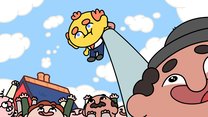







0 Comments
Want to join the discussion? Leave a comment as guest, sign in or register in our forums.
Leave a comment